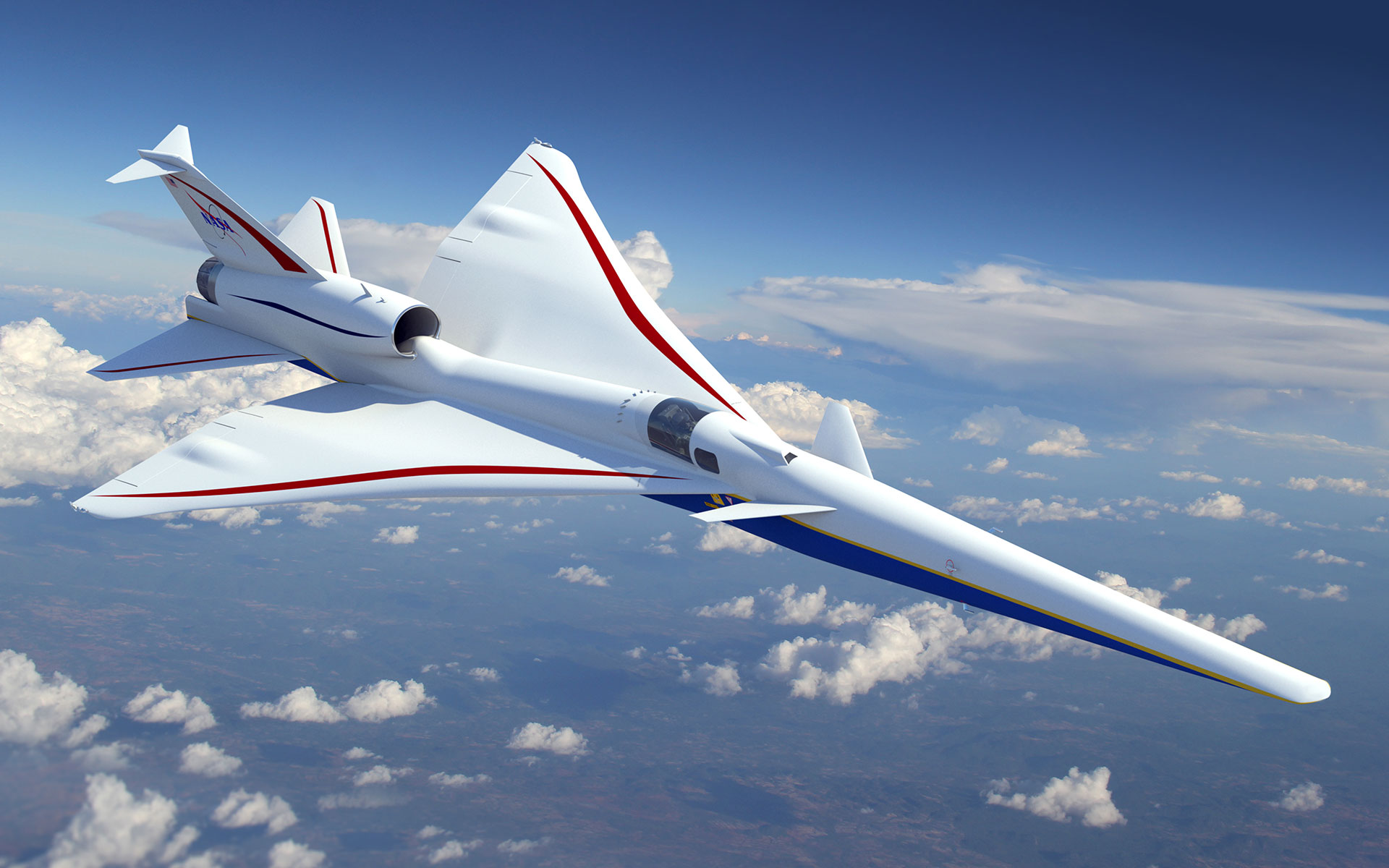NASA is pinning its supersonic hopes on the X-59, and a discussion about it was a featured session at SXSW in Austin.
On hand were NASA’s lead pilot of the X-59, Nils Larson; NASA aerospace engineer Larry Cliatt, and Cathy Bahm, project manager for the Low Boom Flight Demonstrator project at NASA’s Armstrong Flight Center in Edwards, California.
The name of the Project is the key to understanding what is afoot here. The sonic boom is what prompted Congress to ban supersonic flights across land: that was 50 years ago. But what if you could fly supersonic without creating a boom that rattles the dishes, sets off the car alarm and makes the dog bark? That is the goal of the X-59.
Soon the space agency will take the aircraft into the communities and gauge the community’s response to the sound that the X-59 waves when it’s flying supersonic. “We need you, the public, and tell us what is acceptable,” said Bahm.” And then we will gather all of that feedback from the various communities and provide that to the standards makers.
“And so our hope is that when we provide the data to the rule makers and we say people aren’t disturbed by sound levels below this amount, that we can change that speed limit to a sound limit. And then that will allow companies to start building commercial supersonic aircraft.”
A company that is very much in the running is Boom Supersonic of Colorado, which has developed the XB-1 sub-scale demonstrator. On January 28 this year, the XB-1 performed its first supersonic test flight from Mojave Air and Spaceport. It achieved a speed of Mach 1.1, the first privately developed jet to break the sound barrier. NASA also unveiled its X-59 in January. In an interview with Fox Business, Boom Supersonic CEO Blake Scholl said “I think aviation has always been seen as a symbol of technological superiority. Just like the chip, the airplane was invented in America, and China wants to surpass America as a leader in technology, so of course, they’re pursuing supersonic. It is the next step in aviation.”
At the SXSW session, Bahm explained that the first mission phase is the design, development, and test of the X-59. “We are currently in the test part of that phase. And then we do kind of a performance and safety check of the aircraft through its speeds and altitudes that it will be flying as we proceed into the other phases of life.”
As for the plane itself, the design is most unusual. “So the first thing you recognize is that extra long nose that we have: 38 feet of nose with a vehicle that’s only a little bit below 100 feet long. That’s really one of the main things that helps control the strength and the location of the shockwaves. The other unusual feature is the location of the engine: it’s above the wing. The reason it’s above the wing is shock waves come off anything that changes shape in the vehicle. And so when you have a normal supersonic aircraft, most of the time– They’re either below the body of the aircraft or kind of on the side. Those create very strong shock waves that contribute to the overall noise that you hear the sonic boom on the ground. And so with the engine above the wing, it doesn’t have the same contribution. It will have a shock wave that goes up from the vehicle: the wing essentially doesn’t allow the shock wave to go down. Everything has been moved to the top of the vehicle to just minimize and control the shock waves.

“The other interesting item we have is this little detail at the back end of the vehicle on the vertical tail. That small tail is not for control or any other dynamic response. It’s really designed just to interfere with the other shock waves that are coming off the back end of the vehicle.”
Meanwhile, the U.S. faces competition from the foe you might expect. The Commercial Aircraft Corporation of China (owned by the Communist government) is working on the C949. Its goal is the same as that for the X-59: a barely audible sonic boom. But it appears they are far behind the U.S. project, with an anticipated date of 2049 for a commercial vehicle available for passengers.
SXSW photo by C. Cunningham. l to r: Bahm, Cliatt, Larson.
